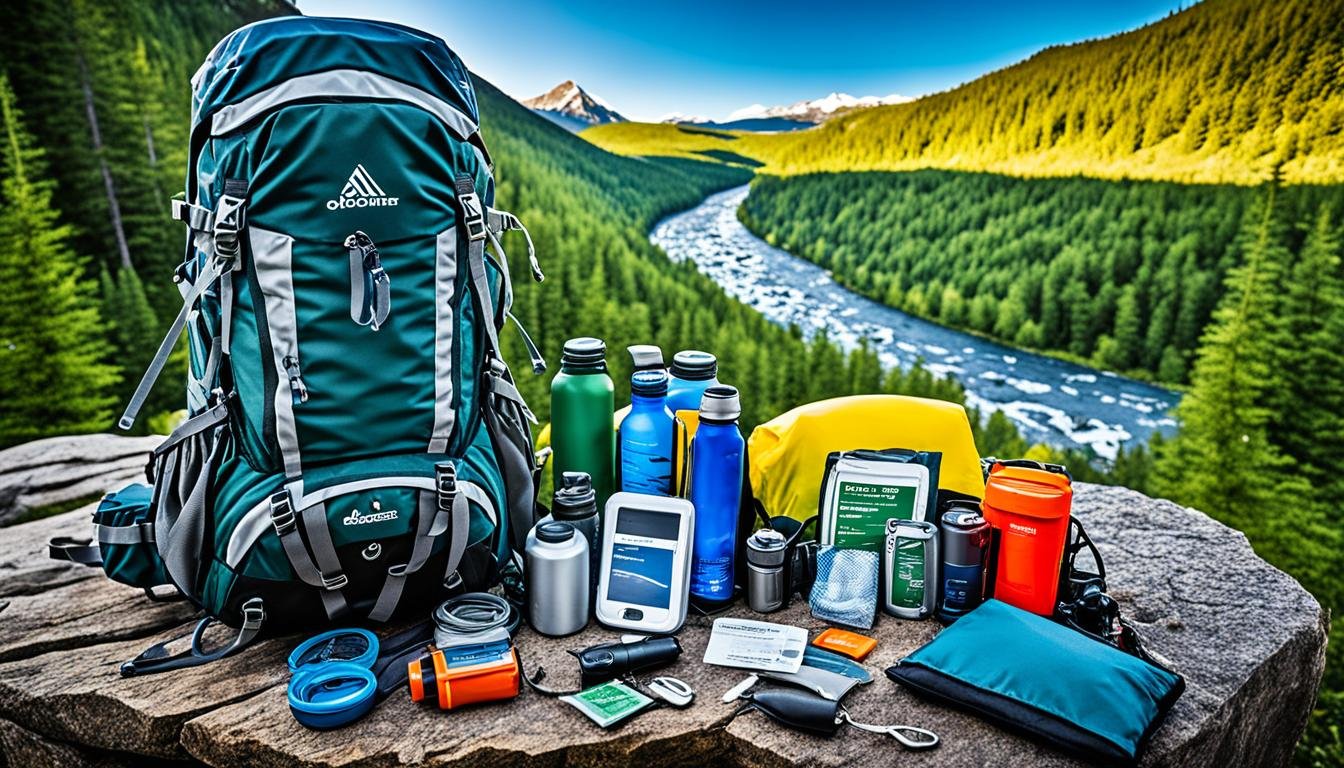The tranquility of our daily lives can be disrupted without warning, thrusting us into scenarios where survival hinges on immediate and decisive action. Have you ever pondered what critical items you would grasp in a frenzied dash, given only minutes to evacuate? Between natural disasters, unforeseen emergencies, and human-made crises, the concept of a bug out kit moves swiftly from a survivalist’s strategy to an essential component of everyday preparedness. This guide is designed to present the pillars on which to build your own emergency survival pack, outlining the must-have bug out bag essentials for a swift, secure exit when time is of the essence.
Assembling a comprehensive disaster preparedness kit isn’t simply a matter of stockpiling; it’s creating a lifeline that extends beyond the confines of your home. A well-curated emergency go bag is not just reassurance—it’s a survival toolkit tailored to navigate the unpredictabilities of nature and circumstance alike. In this guide, we delve into what makes an exemplary emergency evacuation kit, one that bears the hallmarks of foresight, practicality, and the vital expertise required to brave the aftermath of catastrophe.
Your emergency survival gear becomes your closest ally in times of need, bearing the burden of sustainment when all else is in disarray. Whether sheltering in place or navigating challenging terrains, equipping your survival backpack with strategic components is not just a measure of preparedness; it is the blueprint for endurance. Here we lay out the essentials, piece by piece, transforming your readiness into a comprehensive manual for calamity.
Key Takeaways
- Understanding the necessity of a bug out kit for quick and efficient emergency response.
- Knowing the critical components that constitute an all-encompassing emergency survival pack.
- Customizing your disaster preparedness kit to address personal needs and regional threats.
- Gauging the balance between comprehensiveness and portability in your emergency evacuation kit.
- Strategically packing your emergency go bag to ensure survival for a minimum of 72 hours post-evacuation.
- Maintaining the relevance and efficiency of your selected emergency survival gear.
Building Your Bug Out Kit: Customizing for Survival
To customize your bug out bag effectively, it’s crucial to start with a survival backpack that will stand up to the rigors of an emergency situation. The pursuit of creating a personalized emergency kit means assessing the specific challenges one might face in various environments. Below is a guide to constructing a kit that addresses critical needs while ensuring efficiency in survival choices.
Your primary focus should be on the essentials: a tailored disaster gear checklist that includes items vital for your survival, alongside other personal items. Think about the climatic conditions you might face and adjust your clothing and gear accordingly. Keep in mind, the goal is to maintain a kit that weighs no more than 25% of your body weight to assure mobility.
Consider including the following items for a kit that meets personalized requirements and offers efficient response mechanisms:
- Durable and waterproof documents container
- Hygiene supplies to prevent infections
- Multi-functional tools and quality tactical knives
- Adaptable clothing for weather conditions
- Essential communication and navigation tools
Below is a table featuring the essentials for creating an efficient pack:
| Category | Items | Notes |
|---|---|---|
| Documents | Critical documents, Cash | Water-resistant container recommended |
| Hygiene | Sanitation supplies, Personal hygiene kit | Helps prevent infections in harsh environments |
| Tools | Multi-purpose tool, Tactical knives | Must be durable and versatile |
| Clothing | Weather-appropriate apparel | Include layers to adjust to temperature changes |
| Communication and Navigation | Emergency radios, Cell phones with chargers, Laminated maps, Compass | Vital for orientation and potential rescue |
Remember, a well-constructed kit is not static but dynamic, accommodating changes and updates as your situation evolves. With these guidelines, your tailored disaster gear will be poised to support you through any emergency, epitomizing the ideal of efficient survival choices.
Essential Components of a Comprehensive Bug Out Kit
When disaster strikes, the right vital survival items can mean the difference between vulnerability and resilience. A comprehensive bug out kit comes equipped with fundamental emergency gear designed for a multitude of scenarios, each category of items serving a specific, lifesaving function. Below, we delve into the essential components that should form the core of any well-prepared kit, ensuring you have the imperative bug out products when time is of the essence.
- Shelter and Warmth: To safeguard against the elements, your kit should include a durable tent, emergency blankets, and firestarting tools for heat and cooking.
- Hydration and Nutrition: A sufficient supply of water and non-perishable food, alongside purification tablets and collapsible cookware, provide sustenance and maintain energy levels.
- Health and First Aid: A comprehensive first aid kit, complemented by tourniquets and sanitation wipes, prepares you for medical emergencies and hygiene.
- Communication and Navigation: Waterproof emergency radios and reliable headlamps ensure you can signal for help and find your way in the dark.
- Miscellany for Unforeseen Challenges: Multipurpose tools, solar chargers, and copies of personal identification cover various other needs that may arise.
- Urban and Suburban Gear: For those in more populated areas, gear specific to navigating or breaching infrastructure is crucial.
- Wilderness Survivability: Items like fishing kits and hatchets are essential bug out items for outdoor survival.
- Personal Defense and Apparel: Custom-selected items intended for self-protection and appropriate clothing for the climate round out your preparations.
Each category of this kit should be methodically considered and carefully selected to match the environment, personal capabilities, and likely risks you may encounter. The inclusion of essential bug out items is not just about ticking boxes on a generic checklist, but rather about creating a personalized suite of gear and supplies that will stand up to the test of reality, when the theoretical meets the practical in moments of critical need.
Conclusion: The Importance of Preparedness with Your Bug Out Kit
An emergency preparedness mindset goes beyond just owning a bug out kit; it infuses the kit with practical wisdom and foresight. Engaging in proactive survival planning means recognizing the gravity of disaster readiness and acting on it well before threats materialize. Your bug out kit isn’t a static array of goods; it’s a dynamic arsenal of survival, curated with personal needs, environmental factors, and likely hazards in mind. With each component carefully selected and tested, individuals exhibit a readiness to act rapidly and effectively, ensuring emergency evacuation readiness at a moment’s notice.
In the quest for comprehensive disaster readiness, the contents of your bug out kit are a reflection of your commitment to safety and survival. Immersing yourself in the details of what you pack—from the weight of the items to the versatility of each tool—emboldens your ability to endure and adapt across diverse emergencies. The know-how of packing to sustain mobility, manage resources, and leverage skills is indispensable. This preparedness underscores the constructive attitude of proactive survival planning; an understanding that personal accountability and preparation are your unwavering allies in the shadow of uncertainty.
Ultimately, the testament of a robust emergency preparedness mindset lies in the unwavering confidence it instills. A well-assembled bug out kit offers peace of mind, squarely placing the odds in your favor when every second counts. It is not just about bracing for what lies ahead but embracing the philosophy of resilience and self-reliance. So when you find yourself in the throes of an unexpected crisis, take solace in the fact that the contents of your meticulously crafted kit uphold the sentiment: ‘hope for the best, prepare for the worst.’ In the face of adversity, it is this emergency evacuation readiness that transforms the unforeseen into the overcomable.


